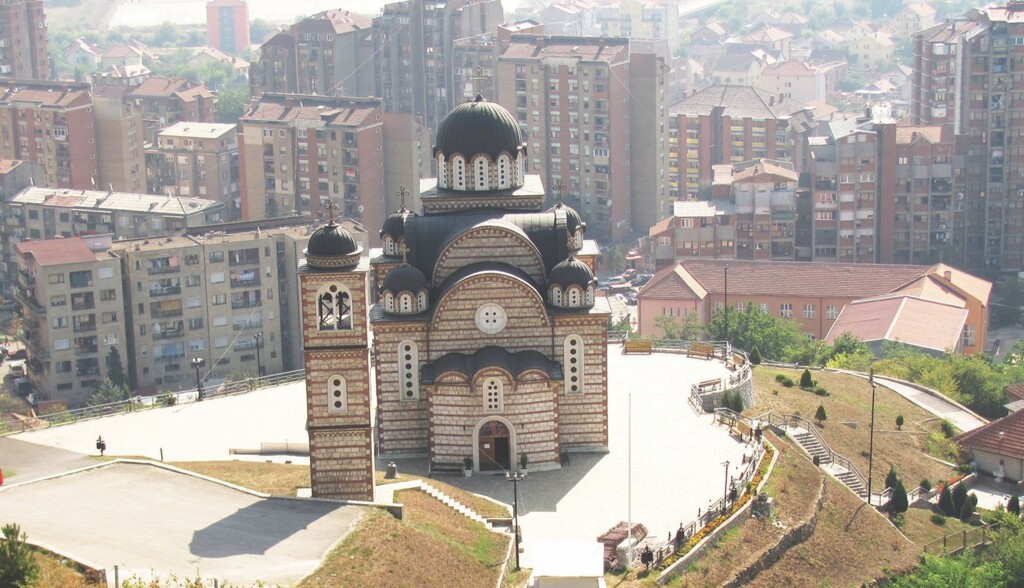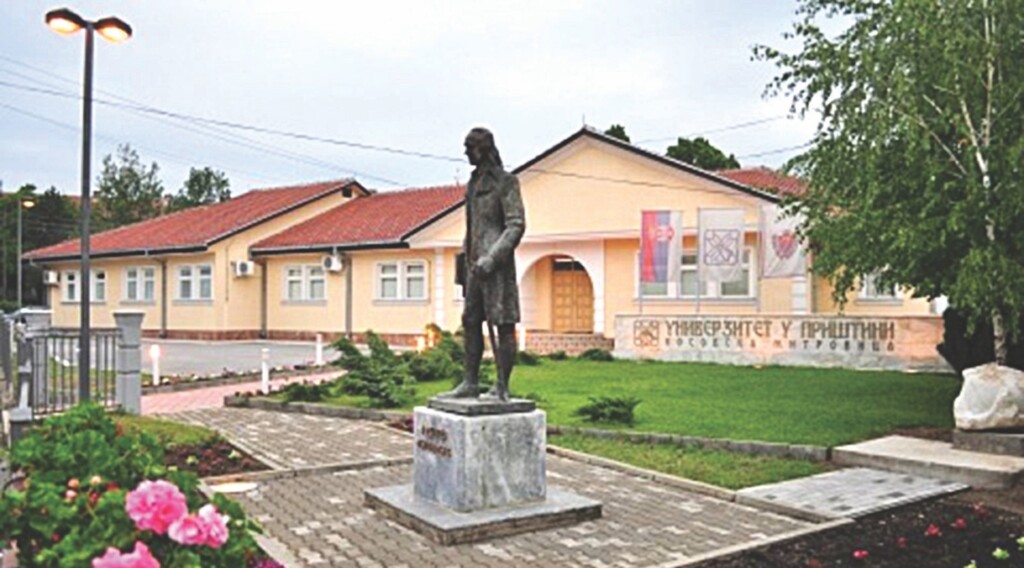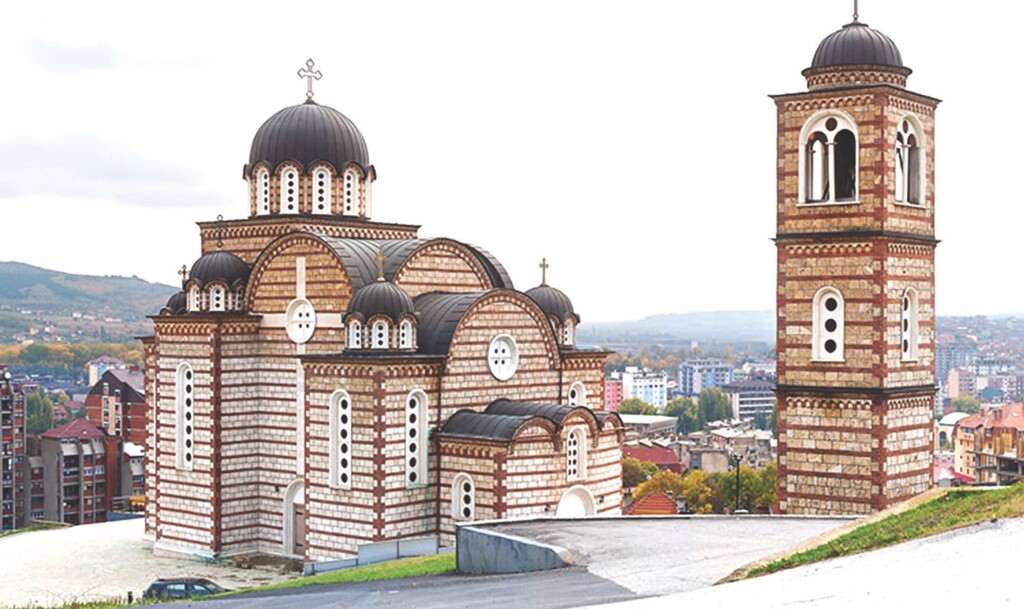Historiography of Kosovska Mitrovica
Mitrovica is located in a valley surrounded by the eastern slopes of Kopaonik to the east, the branches of Čičavica to the south, and the branches of Rogozna to the northwest. Among them, the rhyolite hill of Zvečan stands out with its fortress on top, rising directly above Mitrovica. In this valley, the Ibar and Sitnica rivers merge, and Mitrovica is mostly situated in this confluence area, extending predominantly on the left side of the Ibar.

Mitrovica is first mentioned in the travelogue of Arnold Harff from 1499, as "Mittrix," alongside other Kosovo towns, Vucitrn and Pristina. In the 16th century, it is clearly mentioned as an urban settlement. In the first half of that century, in 1530, B. Kuripesic mentions it as a market in Kosovo. It is also referred to as a market ("Bazar Mitrovizza") in the travelogue of Vlatko Kosace, written somewhat later. In 1573, Difren Kanej even describes it as a beautiful town on the plain.
As a trading place and a location frequented by travelers and caravans, Mitrovica is mentioned by Marijan Bolica, P. Bogdanović, and other travelers and correspondents of the 17th century. Hadji Khalifa also mentions it as an administrative center. He refers to Mitrovica as the center of the kadiluk (administrative district) adjacent to the Vucitrn kadiluk. Evliya Çelebi calls it a station in Kosovo, meaning a caravanserai along the route that traverses Kosovo and Metohija.
Mitrovica is mentioned as an urban settlement in the 18th century as well, among the cities of the Eparchy, during the time of Metropolitan Nikodim. Among the cities in that eparchy, to whose kadis (judicial officials) and naibs (deputies) some decrees were sent in 1191 (1777) and 1198 (1784), Mitrovica is also mentioned. This certainly means that, even through the difficult times of the 18th century, it retained its urban function, at least as an administrative center. In the 19th century, until the occupation of Bosnia and Herzegovina in 1878, Mitrovica is mentioned as a town in the Bosnian Vilayet. After the occupation of Bosnia and Herzegovina, until 1890, it was in the region of the Novi Pazar sanjak (administrative district), subordinated to Novi Pazar, as it had been earlier when, together with the Novi Pazar pashaluk (province), it was part of the Bosnian Vilayet.

Since different parts of the city originated at different times and from different settlers, each has its own particular type, which, again, is almost unique in all parts of the city. The emigration of Muslims and the arrival of Serbs and Montenegrins in their place, as well as sporadic construction of new modern houses, have modified each of these urban areas to some extent. We will try to provide a brief overview of the types of this city through the phases of its development.
At the end of the 19th century, Branislav Nušić noted that the population of Mitrovica consisted of settlers from other cities, and therefore, Mitrovica did not have a distinct type. As Nušić put it, Mitrovica has neither its own clothing nor its own language. In the Mitrovica market, a Nikšićanin mixes with a Velesanac, a Pećanac with a Gnjilane, a Prishtevac with a Prizrenac, and a Pazarac with a Ćakovac. Although somewhat modified, such an image of Mitrovica still exists today. The diversity of its settlers can still be felt in the dialects and local dialects of the regions they came from. The significant diversity of settlers, in the brief but turbulent development of Mitrovica, has made it impossible for it to develop a distinct type in any aspect. It truly appears more distinctive due to its beautiful location and its extensive and diverse space rather than a specific type.
As a result of the NATO aggression against Serbia in the 1990s, North Kosovska Mitrovica emerged through the division of the Kosovska Mitrovica municipality into two municipalities: South Kosovska Mitrovica with an Albanian majority and North Kosovska Mitrovica with a Serbian ethnic majority. The bridge over the Ibar River serves as the boundary. It includes parts of the following settlements: Kosovska Mitrovica, Gornji Suvi Do, and Donji Suvi Do. It encompasses about 1/5 of the city of Kosovska Mitrovica, with 22,000 inhabitants, of which 19,000 are Serbs, 2,000 are Albanians, and 1,000 belong to other minorities. It is located on the left bank of the Ibar River. North Kosovska Mitrovica is currently one of the most significant political, educational, and healthcare centers for Serbs in Kosovo. It is the only urban area in Kosovo and Metohija where Serbs are the majority. The Clinical Center, the only healthcare center for Serbs in Kosovo, is located there.

All administrative and cultural institutions of Mitrovica are located in the southern, Albanian part, including the Orthodox church of St. Sava. With the division of the city, the Serbian part was left without adequate conditions for work - the Cultural Center, City Library, amateur theater, gallery - all remained on the other side of the Ibar River. They had to start from scratch. For their work, they had to use the premises of the former Technical-Metallurgical Faculty. Since 2005, the Serbian Drama of the National Theater in Pristina has been located in Mitrovica, whose stage is now in the Cultural Center in Zvečan, from where it moves to Gračanica. After an 18-year hiatus, in 2011, the Congress of Cultural and Artistic Creativity of Serbia was renewed. This event brings together visual artists, writers, folk ensembles, and cultural ambassadors from Serbia, the Republic of Srpska, and Montenegro. Since 2001, North Kosovska Mitrovica has been the temporary seat of most faculties of the University of Pristina. In addition to them, today there is also the cultural and artistic society "Kosovski Božur" - Kosovska Mitrovica.

On the hill above the city, in the northern part of Mitrovica, after the NATO bombing, the Church of St. Demetrius was built. The city's slava is Mitrovdan, celebrated on November 8th.